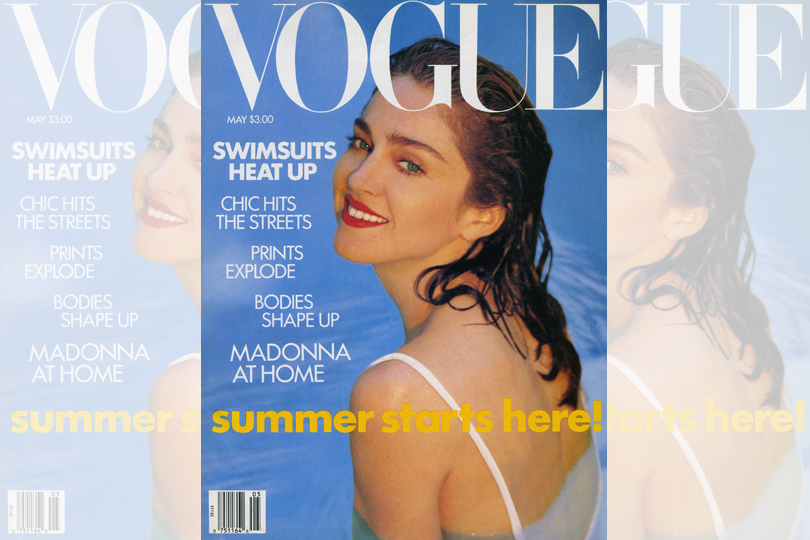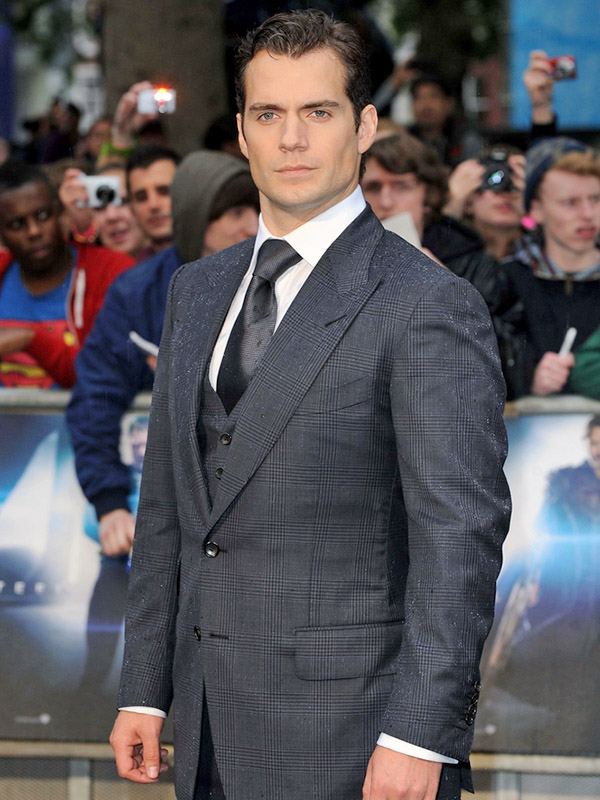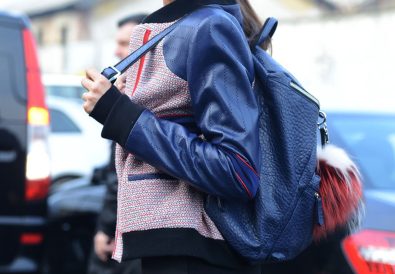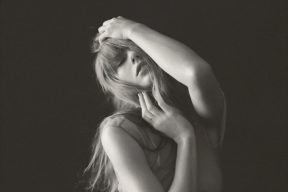By Christopher Turner
These days it’s pretty standard to see Hollywood celebrities rather than supermodels on the glossy covers of fashion magazines. But it wasn’t always that way. For decades, models dominated the covers of every single fashion magazine around the world, until a dramatic shift took over the industry as it headed into the ’90s.
The era of models-as-cover-stars came to an end shortly after Anna Wintour’s accession to the editorship of Vogue. Wintour secured the most prominent position in US fashion journalism in June 1988, replacing Grace Mirabella, who had been the magazine’s editor for 16 years. Once at the helm, Wintour popularized the casting of celebrities – mainly actresses and pop stars – for fashion covers instead of models, and the industry followed suit.
One of the earliest examples of actresses and other celebrities edging out models is Wintour’s first major celeb cover: Madonna on Vogue’s May 1989 cover. When Wintour made that decision, she hadn’t even been on the job for a year. Putting a celebrity on the cover of a fashion magazine, even one as popular as Madonna, was a big risk.
According to Amy Odell’s Anna: The Biography, Wintour knew that, in the often-cruel corporate environment of Vogue publisher Condé Nast, she wouldn’t have long to make her mark. To do so, she learned to take calculated editorial risks. Wintour had little interest in celebrities, but she loved defying expectations – a trait that would shape her editorial decisions over the course of her tenure at Vogue.
Wintour has said that the reason she decided to put Madonna on the cover was because of something said by a random man sitting next to her on an airplane. The man asked her what she did for a living. When she told him, he reportedly said: “That’s the most incredible publication; it’s so chic, it’s so elegant, it represents everything I think of as being very classic and beautiful. It’s Katharine Hepburn, it’s Audrey Hepburn, it’s Grace Kelly – it would never be Madonna.”
For Wintour, his words were a challenge. “The fact that that very nice man that I sat next to on the plane thought that it would be completely wrong to put Madonna on the cover and completely out of keeping with the tradition of Vogue being this very classically correct publication pushed me to break the rules and had people talk about us in a way that was culturally relevant, important and controversial, all of which you need to do from time to time,” Wintour said later.
Like a controversy
At the time of Wintour’s decision, Madonna could not have been a more controversial or risky choice. In 1989, Madonna was one of the most popular, and scandalous, people on the planet. She had released her single “Like a Prayer” from her fourth studio album of the same name, on March 3. The highly controversial music video for the single, which was directed by Mary Lambert, was shot in January 1989. While the music video was still being filmed, Pepsi-Cola announced that they had signed Madonna for a $5 million deal to feature the singer and “Like a Prayer” in an upcoming TV commercial. Pepsi’s sweet two-minute “Like A Prayer” commercial aired on March 2, during an episode of TV’s #1 smash The Cosby Show, playing to around 250 million people in 40 countries around the world. When Madonna’s actual music video for “Like A Prayer” was released the very next day – filled with burning crosses, an occurrence of stigmata and an interracial kiss – the American Family Association successfully pressured Pepsi to drop the star. (Madonna kept the millions she had already been paid.)
The shoot
Wintour, however, was unfazed by the controversy, and Madonna was booked for a shoot at her Los Angeles home. Celebrities at that time weren’t clamouring – as they later would – for Wintour’s approval. “I’m sure [Madonna] thought she was honouring us as well,’ says then Vogue staffer Maggie Buckley, who was responsible for booking celebrities and booked this shoot. Photographer Patrick Demarchelier was hired to shoot Madonna, while a second photographer, Oberto Gili, was hired just to take pictures of her home.
Wintour had recently hired André Leon Talley and appointed him the magazine’s creative director, and one of his first big assignments was to be Madonna’s first Vogue cover. In his 2020 biography, The Chiffon Trenches: A Memoir, Talley recalled the shoot.
“I was in Paris covering the collections and had to fly out to Los Angeles with a bag of clothes for the shoot. Madonna’s Hollywood pad was spacious, with a minimalist decor. She smiled warmly when she introduced herself and said, ‘Hi, I’m Madonna, you want a blow job?’”
Of course, Talley notes that she was just joking and breaking the ice, as they had never met before.
Talley had arrived at Madonna’s house with a suitcase full of clothes to style her, all approved by Wintour, who’d received Polaroids of the dresses from Paris. “You didn’t show up to a shoot with clothes that Anna had not seen; that was never done,” said Talley, who dressed Madonna in Patrick Kelly and Christian Lacroix.
For the cover, Wintour wanted to showcase a simpler Madonna, something the public wasn’t used to. She didn’t want anything “bombastic.” The final result was a minimalist image of Madonna in her pool, hair wet and combed back from her face (the blonde streak in the front of her hair was airbrushed out of the cover), red lips, wearing a simple white swimsuit and no jewellery. Fun fact: The swimsuit that Madonna was wearing cost a mere $40.
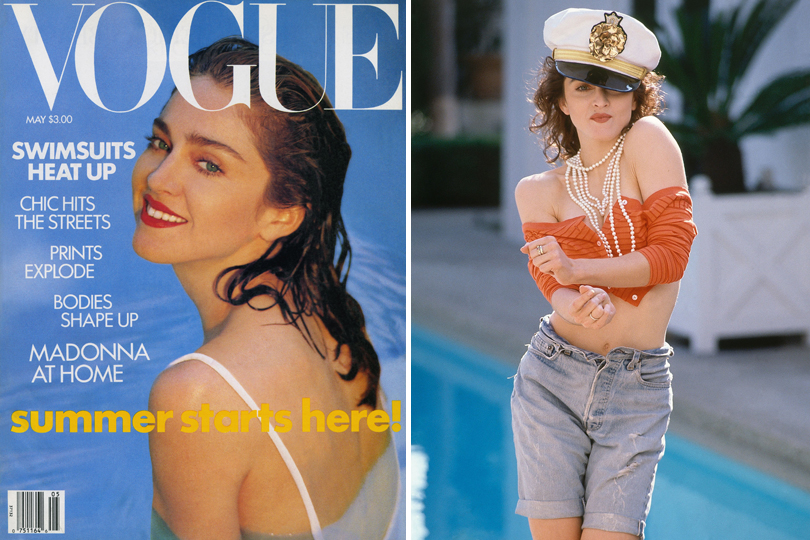

Wintour’s risk paid off. The May 1989 issue of Vogue was a sensation, with the magazine selling 200,000 more copies than the previous year’s May issue, which had been edited by Wintour’s predecessor.
The success of that cover helped spell the beginning of the end for supermodels. Wintour began to repeat the celebrity formula, and other fashion magazines followed. The move from models to Hollywood A-listers negatively affected the models. Supermodel Naomi Campbell said it best: “Of course, we want the magazine covers back…. [A young model has] got more to compete with and there are only a certain amount of covers they’re going to give a model a year. Before, you had models 12 months a year.”
Looking for more on Madonna? Here are a few more Madge deep dives from Christopher Turner:
– THE STORY OF: Madonna’s Iconic Jean Paul Gaultier Cone Bra
– THE STORY OF: Madonna And MAC’s Legendary ‘Russian Red’ Lipstick
– A Look Back At Madonna’s Most Iconic Fashion Moments

